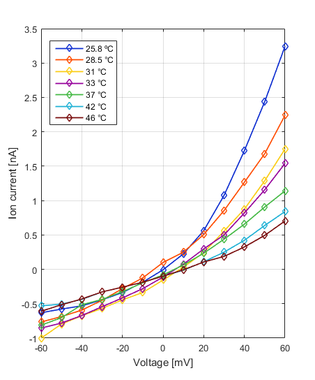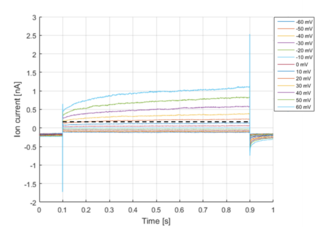Ion channels play a fundamental role in almost all basic cellular processes from action potentials in case of excitable cells to proliferation, differentiation or apoptosis in non-excitable cells. Hence, the interest and knowledge in ion channel function has increased substantially over the last decades.
A key factor, in terms of electrophysiological properties and processes can be expected in temperature alteration. Even small deviations from normal body temperature can significantly alter the ion channel function and modulate the electrophysiological behavior. Indeed, the influence of temperature, whether under hypo- or hyperthermal conditions, have been insufficiently considered in previous studies so far.
The aim of the PhD thesis is an experimentally validated, elementary description of temperature-induced changes in the electrophysiological behavior of selected cell types. A model description of temperature-induced modulation of ion channel activity will be developed using biosignal processing and mathematical modelling approaches. Both, excitable cells like cardiomyocytes and non-excitable cells (e.g. various types of cancer cells) will be considered. For the investigation modern electrophysiology platforms such as, patch-clamp technology and, where applicable, multi-electrode array technology will be used to study ion channel characteristics at different temperature levels, ranging from hypo- to hyperthermal conditions.
Figure 1 shows exemplarily the whole-cell current of a patch-clamp measurement of an A549 non-small lung cancer cell at different voltage steps, demonstrating a clear temperature-dependent shift of the ion channel conductivity and current at hypothermia and hyperthermia compared to normal body temperature.



